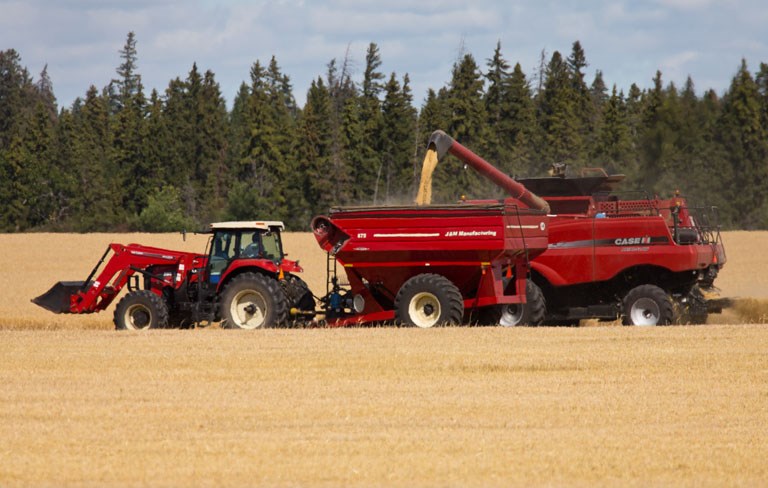Drought conditions and extreme weather events are a small part of the reason Alberta farmers are being hit with higher insurance premiums, but those premiums won’t rise as much as the opposition claims.
On March 9, Agriculture and Irrigation Minister Nate Horner, held a roundtable to refute NDP claims insurance premiums from the Agriculture Financial Services Corporation (AFSC) would be rising 60 per cent.
“The claim that was made last Friday was that crop insurance premiums would be rising by 60 per cent," Horner said. "We'll just start there. That's completely inaccurate.”
On March 3, the NDP held a press conference claiming insurance premiums would rise by 60 per cent.
Horner said insurance premiums will rise, but by about 22 per cent depending on “where you're at and what you're growing.”
He said the increase in insurance premiums is mostly because of the rise in the value of specific crops or commodities.
“We've seen crop insurance go through a lot over the last two years,” said Horner.
The program has changed dramatically, said Horner, as over the last two years it has paid out $4.1 billion — $2.8 billion from the previous year and $1.3 billion for payouts last year.
In 2021, the province experienced a drought that was a “one in 80-year event as for AFSCs, and led to indemnity to pay in payments like we've never seen before.”
The province had above the five- and 10-year average for yield last year but there were also “specific difficulties.”
Central Alberta saw significant hail damage in the summer of 2022, and other areas of the province experienced drought conditions.
“With the heightened value of crops, the payouts were significant ,so that was a major driver in the $1.3 billion. And also the cool dry spring and some other issues around canola probably led to a different-than-expected canola yield, especially in certain parts of the province,” he said.
When asked if the province is worried about the impact of climate change and extreme weather events, agriculture and irrigation press secretary Mackenzie Blyth said in an email that preparing for and understanding the potential impacts of climate change is important for Alberta as a whole.
Blyth said the government has programs and initiatives in place to help mitigate the impacts of extreme events on communities and agriculture including the AgriRecovery initiative developed by both the federal and provincial governments in response to the drought in 2021.
“(The initiative) helped thousands of livestock producers cover their extraordinary costs and resulted in the largest payout in the 80-year history of AFSC,” Blyth said.
Blyth said the province is also supporting farmers and ranchers in collaborating “Results Driven Agricultural Research (RDAR) to deliver the On-Farm Climate Action Fund (OFCAF) program.”
The OFCAF program is funded by Agriculture and Agri-Food Canada to “help farmers tackle climate change through adopting practices to reduce greenhouse gas emissions and store carbon “specifically for in field nitrogen management expanding cover cropping, and implementing rotational grazing practices,” the website for the program states.
In response to a reporter’s question about how much the increase in insurance can be attributed to drought conditions, Horner said it’s hard to completely put a finger on that number.
The formula is based on an individual farmer’s history yield data, the area risk rate, and the premium rate.
“One of the mitigating factors to large swings in this formula is there's a year-to-year cap on the premium rate of 10 per cent. It can increase more than 10 per cent year to year. That 10 per cent on the premium rate that's the growth driver when the fund is below what the actuaries would deem is as being stable,” Horner said.
That can grow 10 per cent year over year, Horner continued.
“Everything else on the other side is directly related to the value of the of the crop and your elected coverage,” he said.
As for whether farmers will be able to afford the agriculture business as insurance premiums and input costs increases, Blyth said all efforts are made to ensure premiums remain affordable.
Horner in response to a reporter’s question on affordability said the fund has been greatly depleted.
“As a producer, the one thing that you can control is having this insurance to cover these terrible years when everything else is out of your control. As much as it's going up, it’s a non-profit insurance program,” Horner said.
Th AFSC doesn’t recover losses over the short-term and uses a 25-year lens, Horner continued, the program is subsidized 36 per cent by the federal government and 24 per cent by the provincial government and producers pay 40 per cent.
“There really is no alternative,” he said.




